

Japanese Good-Luck Talismans
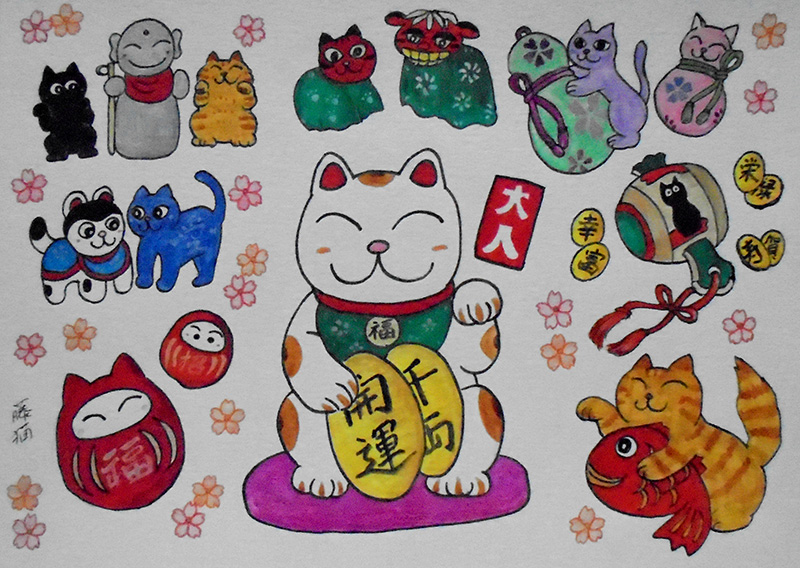
&&&&&&&&&&&&&&&&&&&&&&&&&&&&&&&&&&&&&&&&&&&&&&&&&&&&&
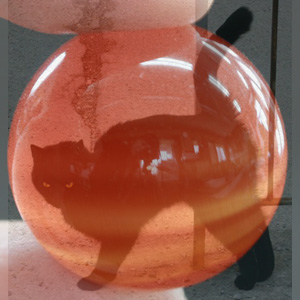

Cat's Eye
Cat’s Eye is known as a power stone, which shines like real cat’s eye.
In many countries, including Japan, it is believed that cat’s eye has
power to protect people
from evil spirits and lead them to right direction of lives, so many people wear cat’s eye
as accessories or display it in their houses as lucky charms.
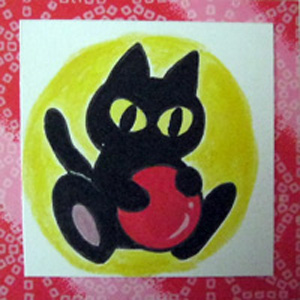
&&&&&&&&&&&&&&&&&&&&&&&&&&&&&&&&&&&&&&&&&&&&&&&&&&&&&
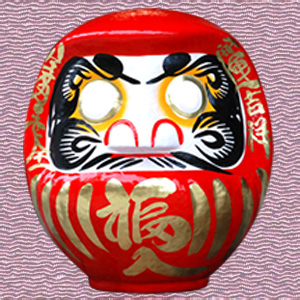

Daruma
Daruma (also known as dharma dolls) are known as indomitable spirits.
It is round on the bottom and it will automatically regain its balance after being tipped over.
It brings good luck in business and for school exams.
Daruma dolls also known as dharma dolls, are hollow and round Japanese
wish dolls with no arms or legs,
modelled after Bodhidharma, the founder and first patriarch of Zen.
Typical colors are red (most common), yellow, green, and white.
The doll has a face with a moustache and beard, but its eyes only contain the color white.
Using black ink, one fills in a single circular eye while thinking of a wish.
Should the wish later come true, the second eye is filled in.
It is traditional to fill in the right eye first; the
left eye is left blank until the wish is fulfilled.
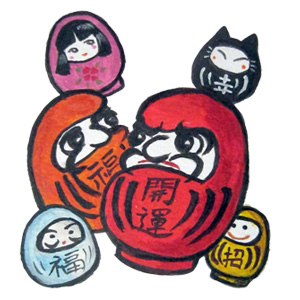
&&&&&&&&&&&&&&&&&&&&&&&&&&&&&&&&&&&&&&&&&&&&&&&&&&&&&
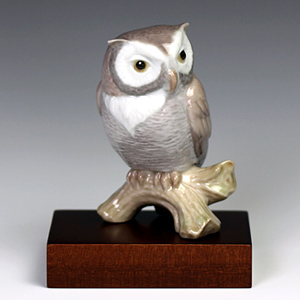

Fukurou: Owl
Fukurou (owl) is loved in Japan as a lucky bird.
“Fuku” means “Fortune” in Japanese, so it is said
that Fukurou’s “Fuku” sounds also lucky.
In Japan, an ornament of owl is often gifted
as a token of appreciation.
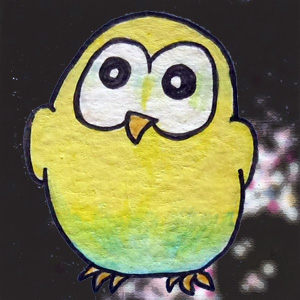
&&&&&&&&&&&&&&&&&&&&&&&&&&&&&&&&&&&&&&&&&&&&&&&&&&&&&
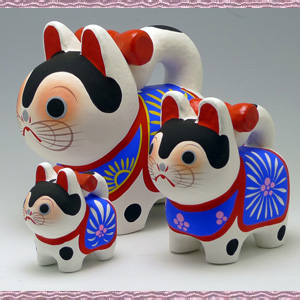

Inuhariko
Inuhariko (papier mache dog) is the charm for protection.
A charm believed to offer protection for a safe birth and good luck for babies.
It is good gift for a baby shower.
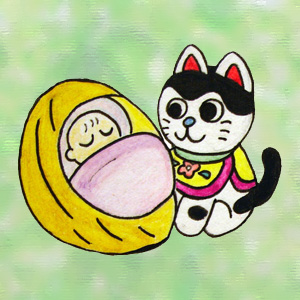
&&&&&&&&&&&&&&&&&&&&&&&&&&&&&&&&&&&&&&&&&&&&&&&&&&&&&
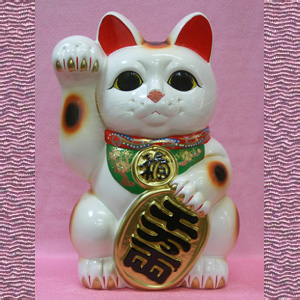

Manekineko
The Maneki Neko (Literally "Beckoning Cat"; also known as Welcoming Cat,
Lucky Cat, Money cat or Fortune Cat)
is a common Japanese sculpture, often made of porcelain or ceramic,
which is believed to bring good luck to the owner.
The sculpture depicts a cat (traditionally a Japanese Bobtail) beckoning with an upright paw,
and is usually displayed—many times at the entrance—in shops, restaurants,
pachinko parlors, and other businesses.
Some of the sculptures are electric or battery-powered and have a slow-moving paw beckoning.
In the design of the sculptures, a raised right paw supposedly attracts money,
while a raised left paw attracts customers.
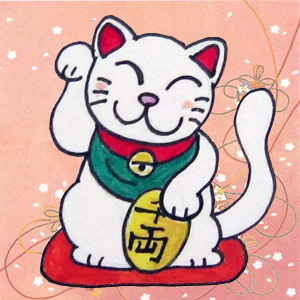
&&&&&&&&&&&&&&&&&&&&&&&&&&&&&&&&&&&&&&&&&&&&&&&&&&&&&
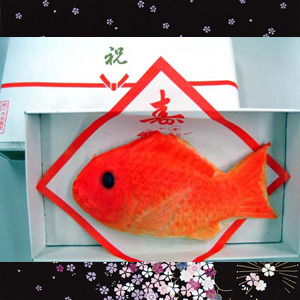

Medetai
Tai (sea bream) is prized as “the king of fish” for its beautiful shape and tastiness.
Because Japanese people associate “tai” with the Japanese word, “Medetai (auspicious)”,
tai is considered as auspicious fish for wedding and other Celebrations.
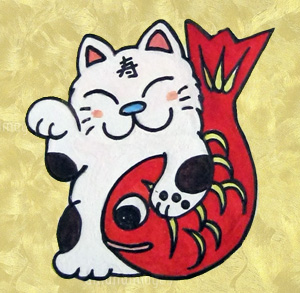
&&&&&&&&&&&&&&&&&&&&&&&&&&&&&&&&&&&&&&&&&&&&&&&&&&&&&
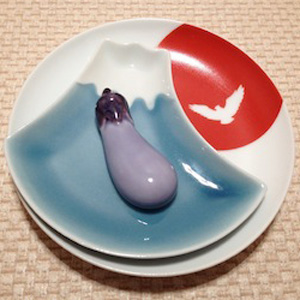

Nasubi
Nasubi (Eggplant) is pronounced the same as accomplishment in Japanese.
It is good luck for achievement.
Also, in Japan, it is believed that you will have a good year if you
have these auspicious dreams,
“The first, Mt. Fuji, the second , a hawk, and the third, an eggplant) on New Year’s Day.
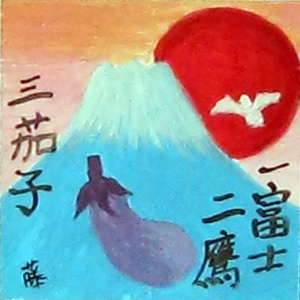
&&&&&&&&&&&&&&&&&&&&&&&&&&&&&&&&&&&&&&&&&&&&&&&&&&&&&
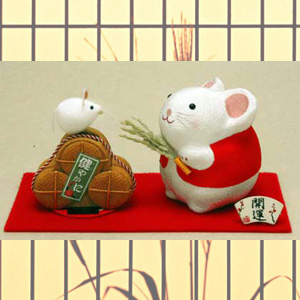

Nezumi
Japanese people believe that the mouse has a special
gift to go back and forth to heaven.
It is also the symbol of reliability, carefulness, savings and the
prosperity of family.
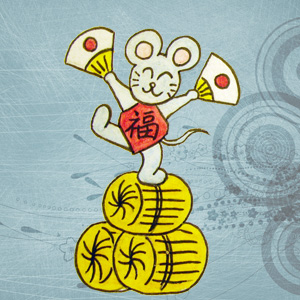
&&&&&&&&&&&&&&&&&&&&&&&&&&&&&&&&&&&&&&&&&&&&&&&&&&&&&
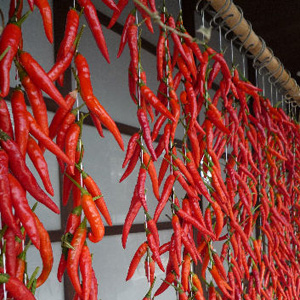

Red Peppers
In Japan and some Asian countries, it is believed that
Red Peppers have power to protect people from house devils, goblins and monsters
and to get rid of evil sprits from human beings.
On certain days, some families in Japan display red peppers
on their main gate to protect their house from some devils.
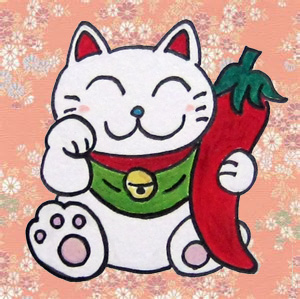
&&&&&&&&&&&&&&&&&&&&&&&&&&&&&&&&&&&&&&&&&&&&&&&&&&&&&
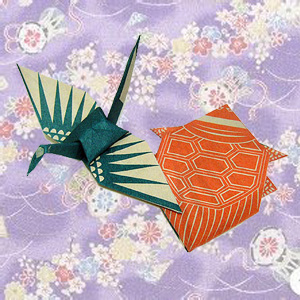

Tsuru to Kame
In Japan, the crane and the tortoise are considered auspicious animals
that symbolize longevity and happiness.
They are often depicted in pictures related to
celebratory occasions.
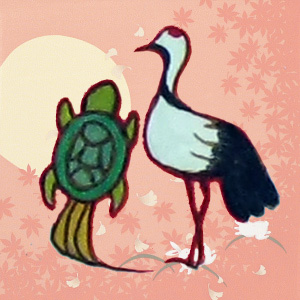
&&&&&&&&&&&&&&&&&&&&&&&&&&&&&&&&&&&&&&&&&&&&&&&&&&&&&
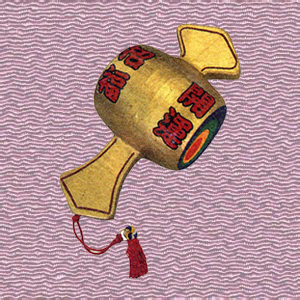

Uchide no KozuchiTsuru to Kame
Uchide no Kozuchi is a legendary Japanese Harmer,
and translates as "Small Magic Hammer."
The harmer is said to be very small, and swinging it grants it's
holder's wishes.
It plays an important part of "Issun Boshi",
which is one of most famous Japanese folk tales.
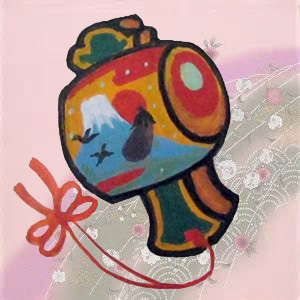
&&&&&&&&&&&&&&&&&&&&&&&&&&&&&&&&&&&&&&&&&&&&&&&&&&&&
Illustration by FUJINEKO
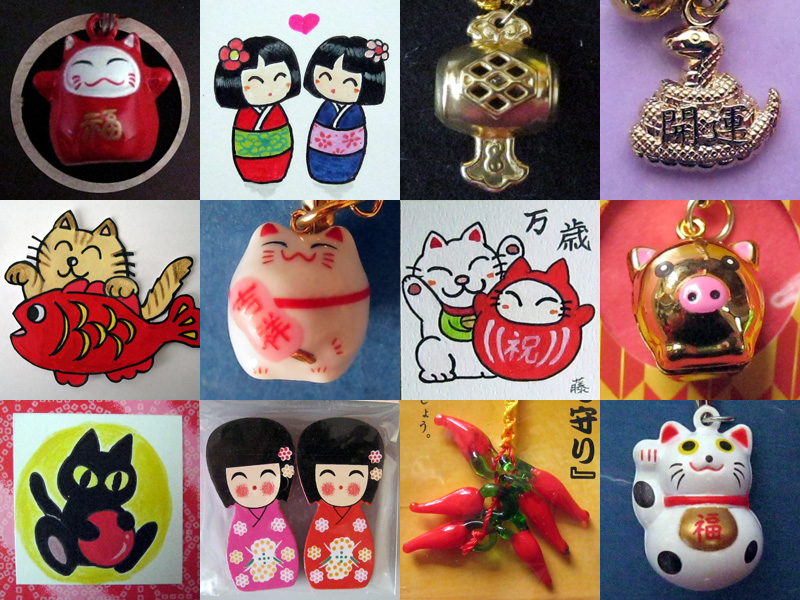
If you have questions about Japanese Talismans,
please feel free to e-mail us at:
&&&&&&&&&&&&&&&&&&&&&&&&&&&&&&&&&&&&&&&&&&&&&&&&&&&&